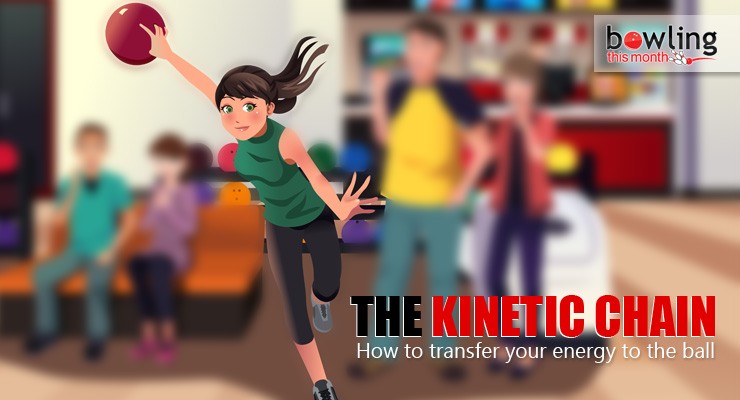Article Contents
- 1. How important are the legs and torso in force generation?
- 2. Components of efficient energy transfer
- 3. Major contributors to inefficiencies between links in the kinetic chain
- 4. Conclusion
- 5. References
Note: This article is only available to Bowling This Month subscribers.
In this month’s Slowinski At Large, I discuss force generation and energy transfer from the body to the bowling ball. To maximize performance, coaches and players should begin to conceptualize the physical game in terms of force generation and energy transfer. With an energy transfer analysis, we can more accurately determine which movements aid in maximizing performance with efficient energy transfer while identifying those which create inefficiencies leading to unnecessary energy depletion.
The concept of the kinetic chain has been at the core of tennis, golf, baseball, and cricket instruction but has received little to no attention in the bowling community. Simply stated, the kinetic chain concept posits that forces are generated from the ground up and are transferred through segments of the body. For example, a normal kinetic chain involves links from the ground to the legs to the trunk to the arm.
In the normal kinetic chain of throwing, the ground, legs, and trunk act as the force generators; the shoulder acts as a funnel and force regulator; and the arm acts as the force delivery mechanism.
-Hoeven & Kibler, 2006
In throwing an object, the athlete starts with a force from the ground which is linked to the legs, then the trunk, into the shoulder, and finally through the arm. With the large amount of force generated and transferred in elite sport, a small inefficiency can cause energy to be depleted and interrupt a fluid force chain link from one part of the body to another, reducing performance at the end of the chain. Worst case, these inefficiencies can cause injuries due to a player physically compensating along the kinetic chain.
The mechanism of transferring energy from the body to the bowling ball is fundamental in becoming better in our sport. Accordingly, this requires a more ...
Already a premium member? Click here to log in.


